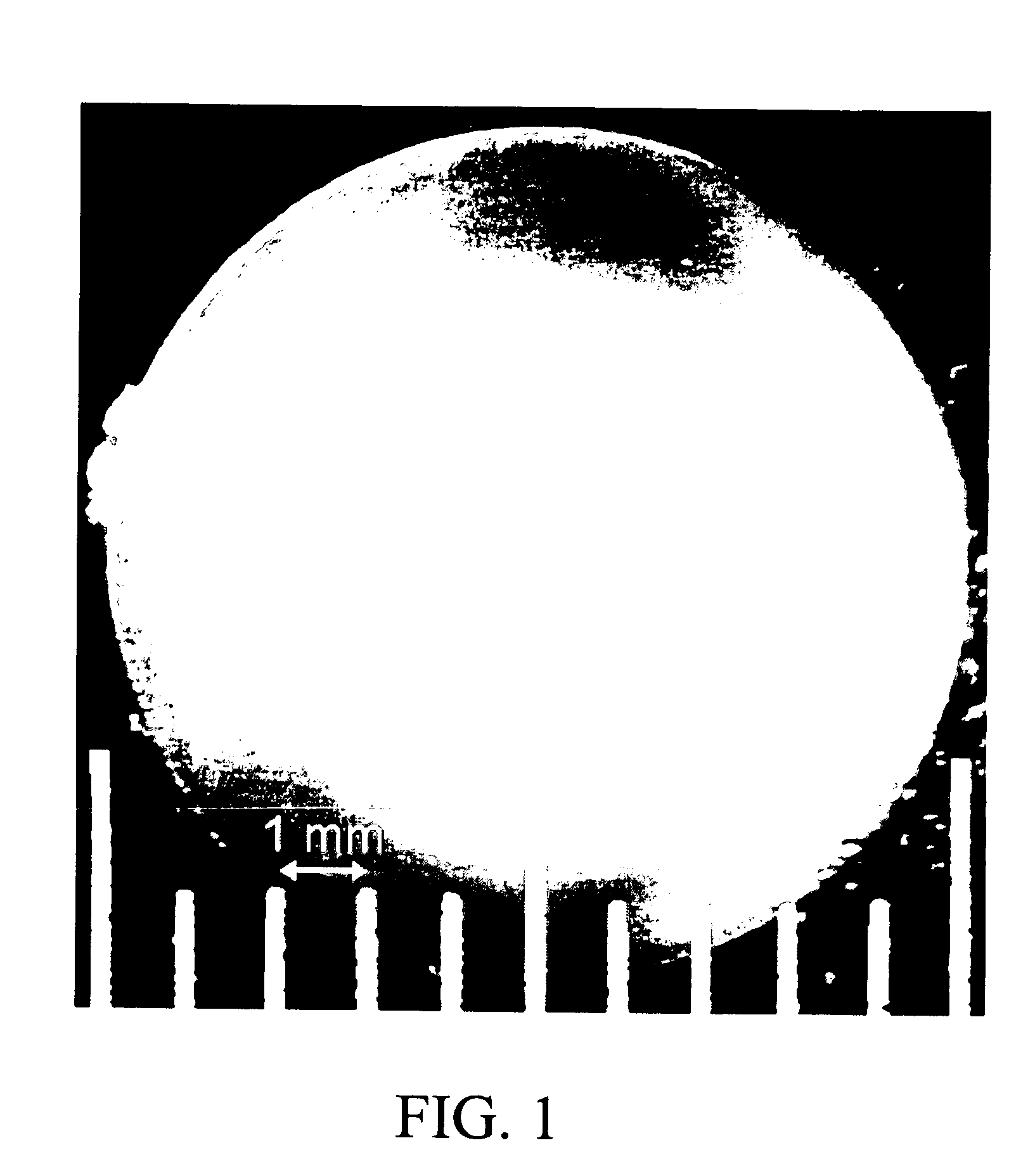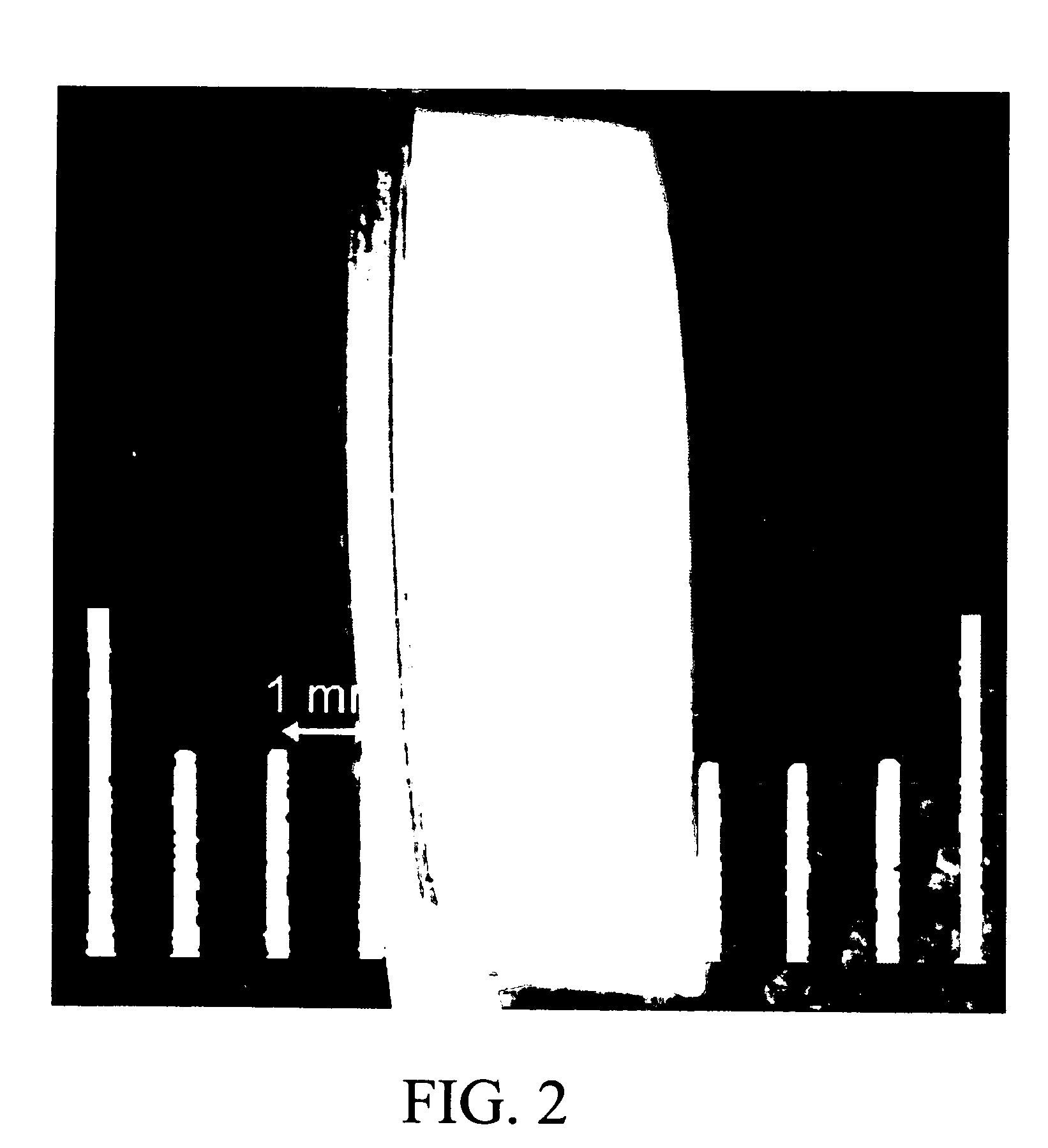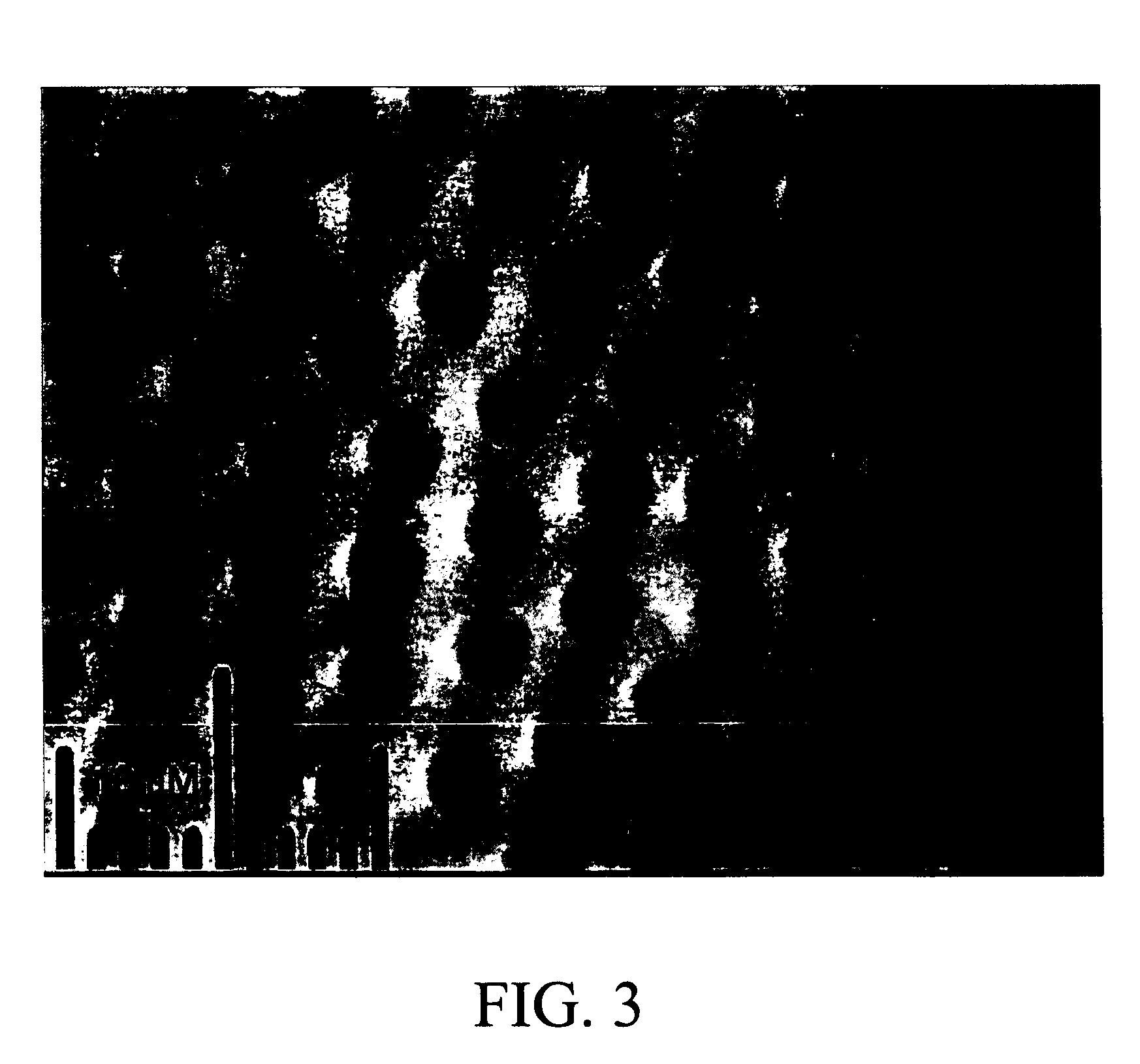Novel tissue engineered scaffolds derived from copper capillary alginate gels
a scaffold and copper capillary technology, applied in the field of copper capillary alginate gels, can solve the problems of site morbidity, motor nerves are more refractory, and the functional outcomes of nerve repair are still far from optimal, and achieve excellent properties conducive to growth and regeneration
- Summary
- Abstract
- Description
- Claims
- Application Information
AI Technical Summary
Benefits of technology
Problems solved by technology
Method used
Image
Examples
example 1
Stabilization of CCAG Scaffold with Ba(OH)2
[0111] A CCAG scaffold was stabilized via ion exchange with Ba(OH)2. Specifically, raw CCAG samples were placed individually into 15 ml of 0.05M Ba(OH)2 and stirred on an earthquake shaker for one week. The Ba(OH)2 solution was changed daily, and each step was conducted at room temperature (about 23° C.). During the first several hours of the exchange process, the raw CCAG samples changed in color from a light blue, due to Cu2+, to a deep royal blue. When CCAG samples were initial submerged into 0.05M Ba(OH)2 solution they floated due to a difference in density. Within minutes equilibrium was reached and the samples sank; this sinking was accompanied by the color change. The color change began at the disc edges and faces and proceeded toward the center of the sample. At anytime before completion of the diffusion process (12-24 hrs.), an inner core of light blue / blue-green color could be observed. If the raw samples were not washed thorough...
example 2
Chitosan Stabilization of Scaffold
[0121] A chitosan-stabilized sample was also prepared using a flowcell-syringe pump setup as shown in FIG. 5. Thirty milliliters of 0.2% w / v chitosan solution was flowed at ca. 2 ml / min through the flowcell containing a raw CCAG sample disc. This process was repeated two additional times, and then the sample was placed in 14 ml of MEM and stirred overnight on an earthquake mixer. Cu2+ diffused out of the chitosan-stabilized sample slower than out of raw CCAG samples. Also, the capillary morphology of the chitosan-stabilized sample changed from circular to non-circular upon copper removal with MEM as shown in FIG. 4. SEM images of capillaries of raw CCAG samples are shown in FIGS. 6-8.
[0122] Raw CCAG sample discs are placed singly in a flow cell. Freshly prepared chitosan solution (25 ml 0.02M acetic acid, 0.2% w / v) is flowed through the sample disc at 3 ml / min via a syringe pump. Next, DI water (10 ml) is flowed through the sample at the same flow...
example 3
SEMS / EDS Analysis
[0123] The large depth of field of a SEM provided for excellent depictions of the 3-dimentional structure of the sample scaffolds. Compositional information via EDS was collected at essentially the same time with a LOD ca. 1000 ppm. The technique was relatively simple and straightforward with the aid of a software package. The samples were, however, permanently changed due to the drying and conductive coating procedures required for SEM examination.
[0124] Freeze-dried samples produced previously were mounted separately onto aluminum SEM stubs with double-sided carbon tabs. The mounted specimens were then carbon coated and stored until analyzed in a desiccator. All samples were analyzed using a JEOL JSM-6400 SEM equipped with an Oxford EDS system and a LINK ISIS software package version 3.35. All samples were analyzed at 20 KeV accelerating voltage as preliminary results have shown that good images can be easily obtained at this setting. Also, this accelerating vol...
PUM
| Property | Measurement | Unit |
|---|---|---|
| Diameter | aaaaa | aaaaa |
| Diameter | aaaaa | aaaaa |
| Diameter | aaaaa | aaaaa |
Abstract
Description
Claims
Application Information
 Login to View More
Login to View More - R&D
- Intellectual Property
- Life Sciences
- Materials
- Tech Scout
- Unparalleled Data Quality
- Higher Quality Content
- 60% Fewer Hallucinations
Browse by: Latest US Patents, China's latest patents, Technical Efficacy Thesaurus, Application Domain, Technology Topic, Popular Technical Reports.
© 2025 PatSnap. All rights reserved.Legal|Privacy policy|Modern Slavery Act Transparency Statement|Sitemap|About US| Contact US: help@patsnap.com



